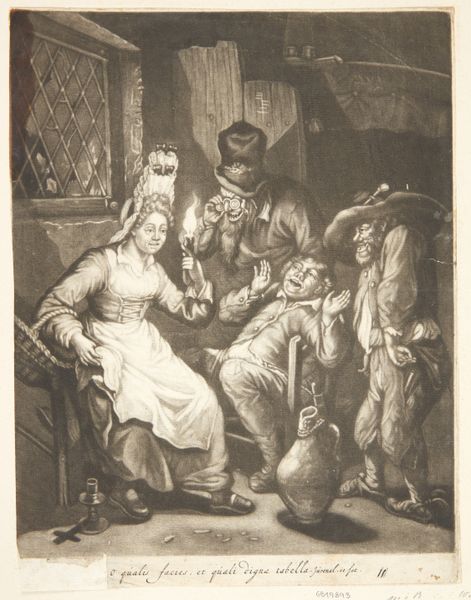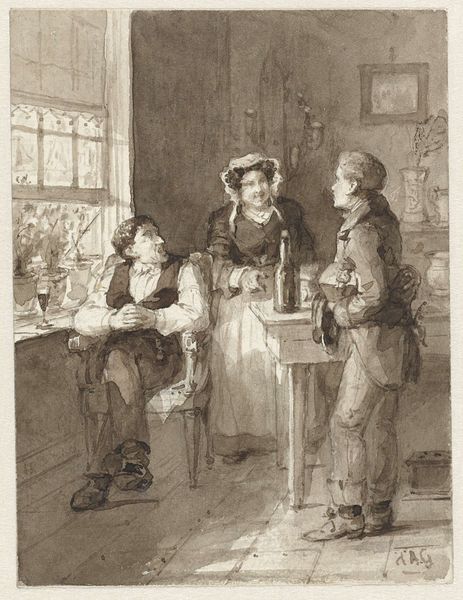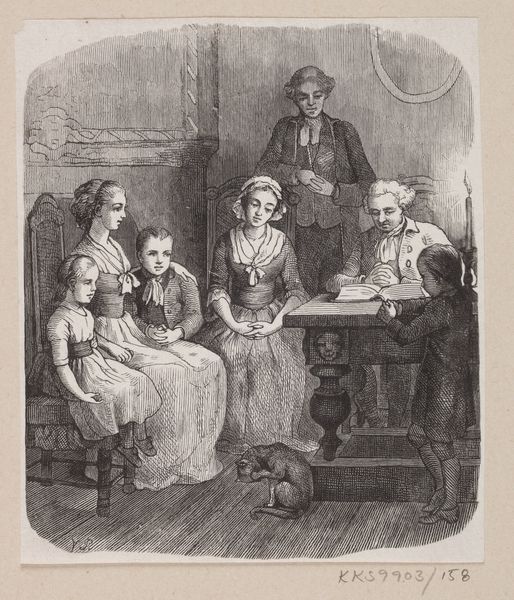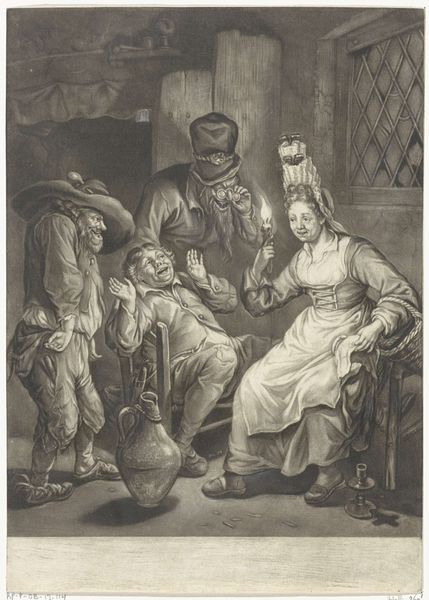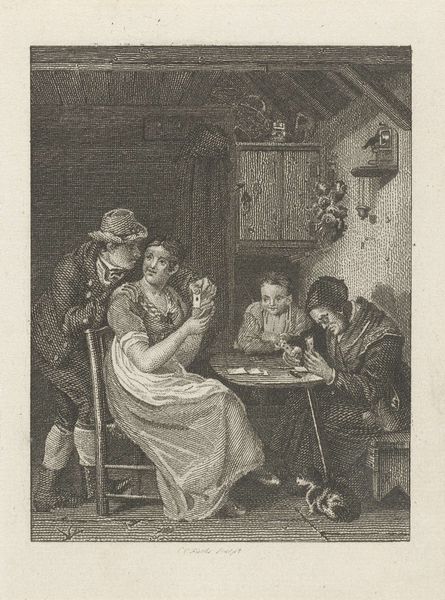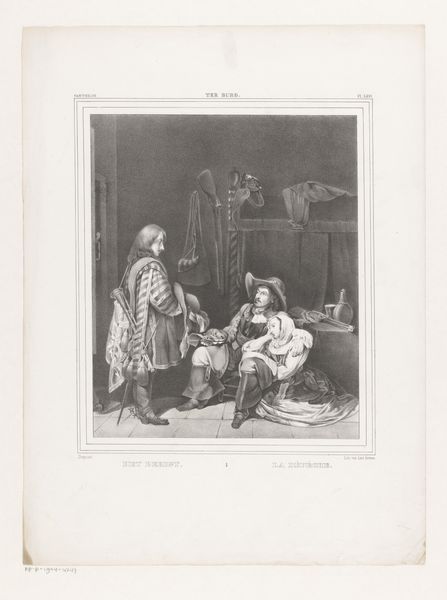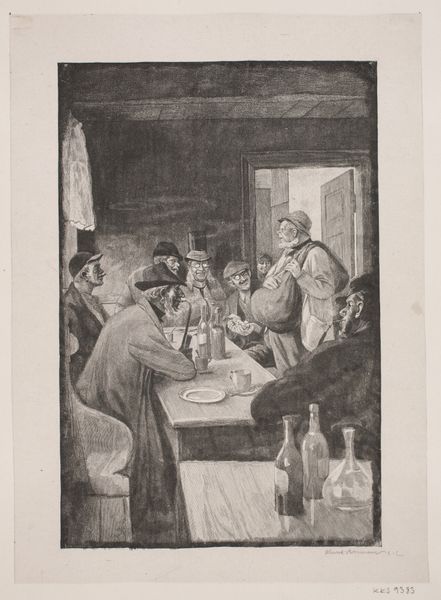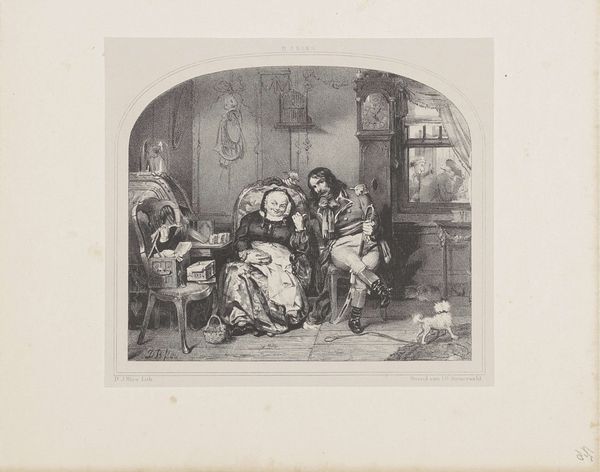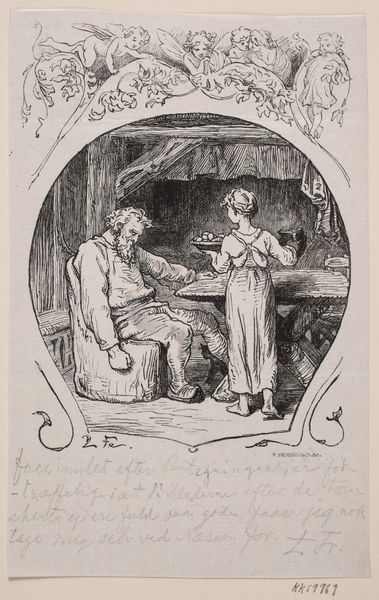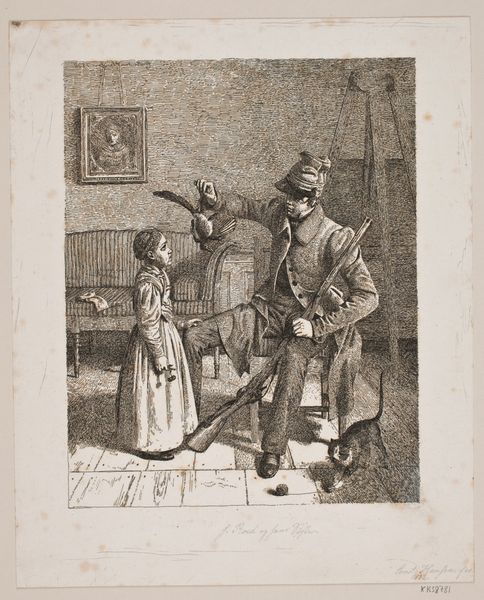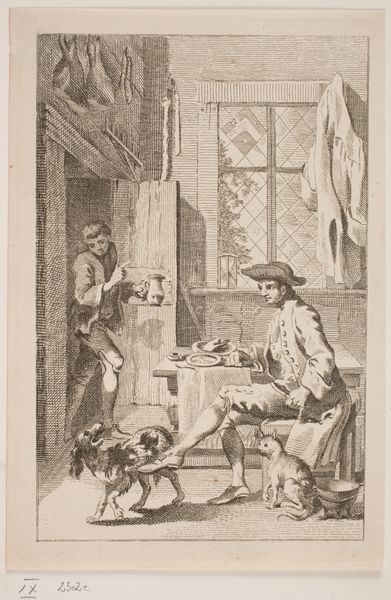
engraving
#
old engraving style
#
archive photography
#
historical photography
#
19th century
#
genre-painting
#
engraving
#
realism
Dimensions: height 287 mm, width 198 mm
Copyright: Rijks Museum: Open Domain
Editor: This is "Verkoper van houten beelden" by Adolf Closs, created sometime between 1850 and 1894. It’s an engraving, and the scene feels quite intimate, like we’re peering into a domestic space where a transaction is about to occur. What stands out to you when you look at this piece? Curator: I see an intersection of craft, commerce, and class. Consider the materiality – wood transformed into these figures, bought and sold. This wasn’t ‘high art’ in its time; it’s closer to functional objects. Look at the detail achievable through engraving, a process in itself reflecting industrial capabilities but applied to represent these hand-carved goods. How were these images circulated and consumed? Editor: That's interesting. So you're thinking about the labor and distribution involved, not just the artistic skill? Curator: Precisely! And who’s buying these figurines? This suggests leisure time and disposable income. Observe the clothing: the clear distinction between the family producing and the suited gentleman seemingly purchasing, highlighting disparities within society reflected through object ownership and display. What can the paper at his feet indicate about his business there? Editor: Hmm, maybe a contract, something relating to this trade... It's a much more layered image than I initially thought. It shows a lot more about work than art. Curator: And isn’t all art really about work, in the end? The physical and intellectual labor required, the materials processed, the systems of exchange activated – all materialized in this unassuming engraving. Editor: So true. I didn't really think of it that way at first. This makes me want to look at all art with a focus on the process and its role in the socio-economic conditions of the time. Curator: Wonderful, and isn't it amazing that it only took a small shift of our perspective to consider more inclusively its social making!
Comments
No comments
Be the first to comment and join the conversation on the ultimate creative platform.
